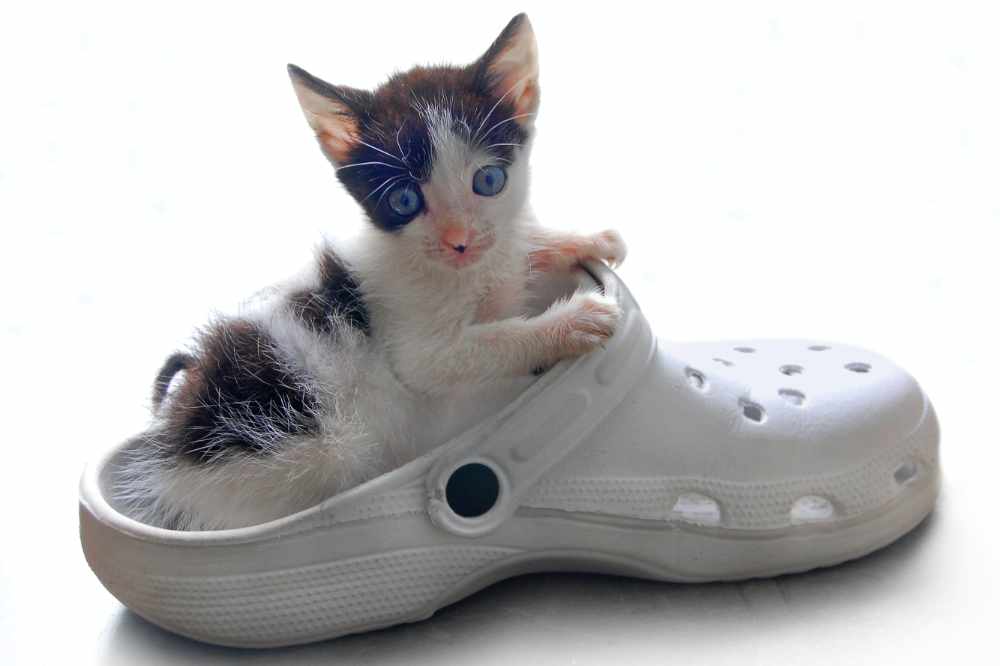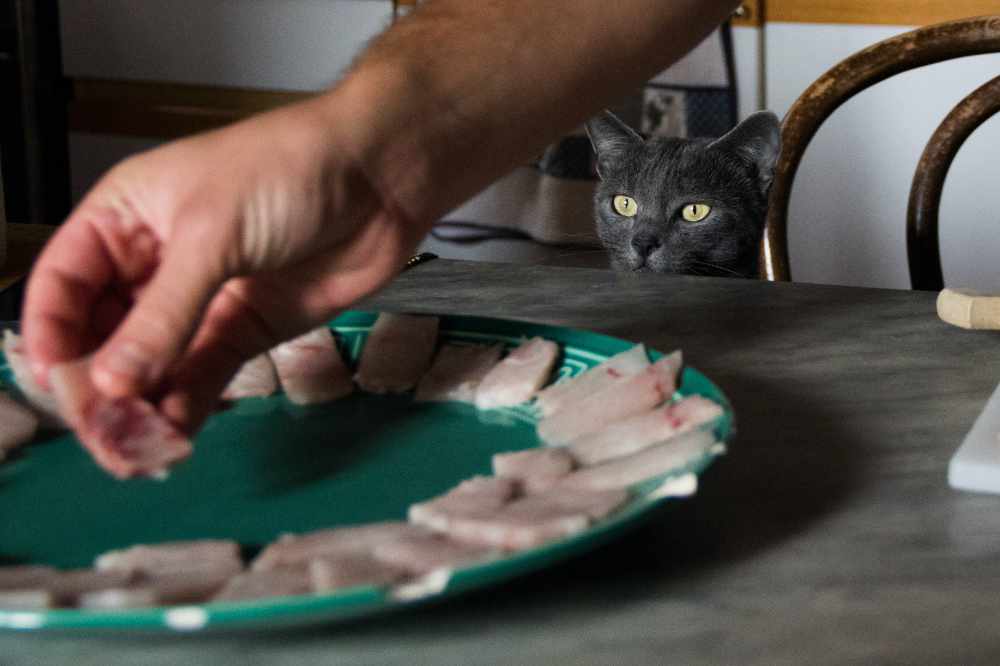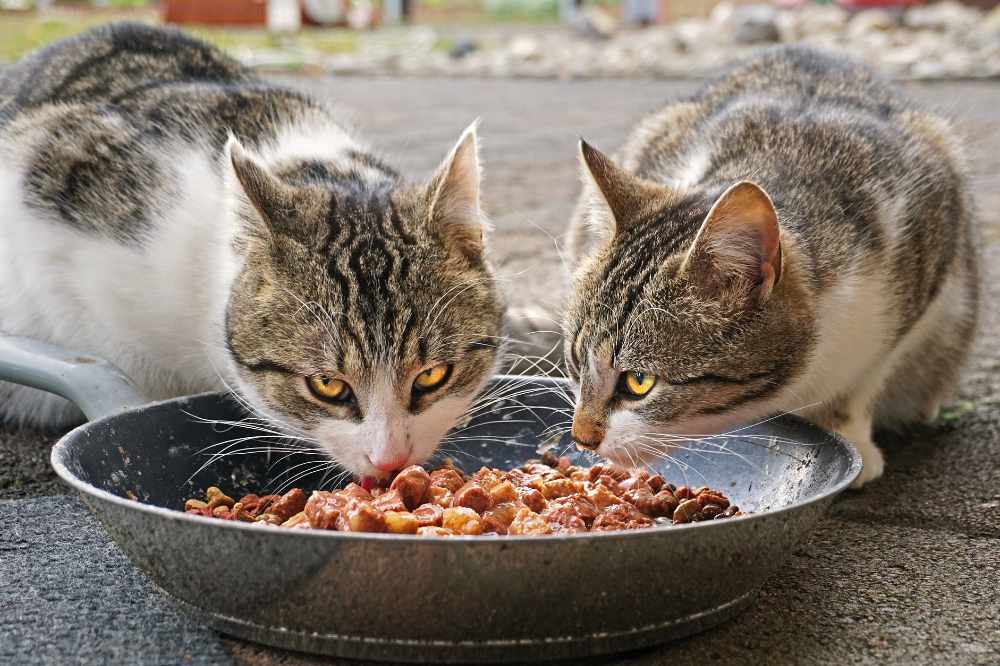Calories are such a useful indicator to tell us how much we should be eating on a daily basis. Although other factors come into play, the number of calories eaten is a really useful guideline to indicate whether we will be gaining, losing or maintaining our current weight. It has become a normal thing for our food to show the calorie content on the packaging but the same is not true for our pets.
Cats are very prone to developing obesity, especially if they are indoors a lot of the time and not very active. The food we feed them can be very high in calories and cats are notorious for overindulging. It can be really difficult to visualise how much food your cat actually needs and different brands of cat food can vary a lot in how nutritionally dense they are.
To help avoid obesity and all the health issues that come with this condition, knowing how many calories to feed your cat is an invaluable resource.
An adult cat that weighs over 2 kg needs 1.2 x (30 x (bodyweight in kg) + 70). So a 4kg cat will need 1.2 x (30 x 4 + 70) which is 228 calories per day.
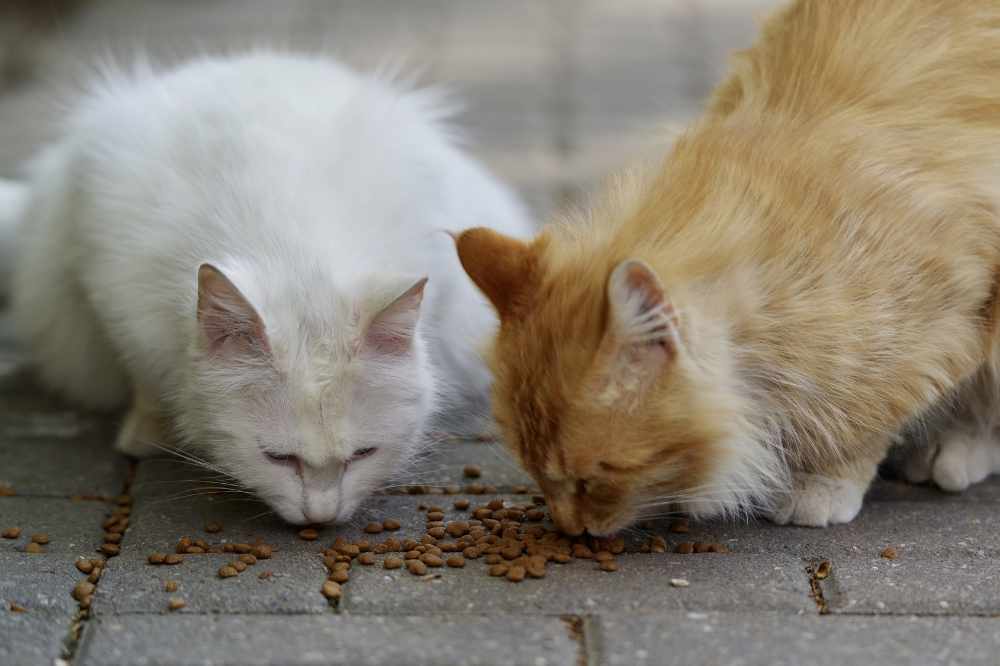
Calculating Calories for Cats
Calories are a unit of energy. Like us, cats need a certain amount of calories daily to support basic metabolic requirements. The Resting Energy Requirement (RER) is the term used to describe this. It is a simple calculation that incorporates essential metabolic functions, the energy needed for recovery and feeding. The calories per day are calculated slightly differently for cats weighing under 2kg (4.4lb) or over 2kg (4.4lb).
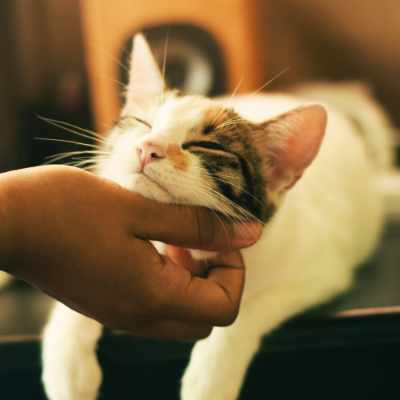
For cats weighing over 2kg:
RER (cal/day) = 30 x (bodyweight in kg) + 70
For cats weighing under 2kg:
RER (cal/day) = 70 x (bodyweight in kg)0.75
This allows you to gain a minimum calorie requirement for your cat but the amount your cat actually needs can vary hugely depending on many different factors.
Daily energy requirement gives us a better idea of the number of calories your cat actually needs. It is calculated based on the RER plus your cat’s life stage.
Feeding Chart For a Healthy Adult Cat
| Bodyweight in Kg | Bodyweight in Lb | RER (Resting Energy Requirement) | Calorie Requirement Per Day |
| 1 | 2.2 | 70 | 84 |
| 2 | 4.4 | 130 | 156 |
| 3 | 6.6 | 160 | 192 |
| 4 | 8.8 | 190 | 228 |
| 5 | 11.0 | 220 | 264 |
| 6 | 13.2 | 250 | 300 |
Feeding Your Kitten
A growing kitten needs 2.5 x RER. Kittens need a lot of energy for all the activity they do as well as for growing. They have small stomachs so can struggle to eat enough in one go. Most kittens need fed at least three times a day but ad-lib feeding can be beneficial to support optimal growth.
As kittens reach fully grown these calorie requirements reduce significantly. Neutering can also reduce calorie requirements by 25%.
It’s really important to feed your kitten complete kitten food that contains a good balance of all the nutrients they need. It’s also very beneficial to introduce your kitten to a variety of flavours and textures of food including wet and dry options. This can help reduce fussiness as they get older and is especially effective for very young kittens under 16 weeks old.
Feeding Your Healthy Adult Cat
Neutered vs Not Neutered

Vets often recommend that you should neuter your pet cat. This is the removal of the testicles in male cats and the removal of the ovaries and possibly the womb as well in a female cat. This helps control unwanted behaviours like spraying urine, calling for mates, wandering and fighting as well as unwanted pregnancies.
Removing these organs can change the balance of hormones in your cat, which means that they will have slightly lower metabolic demands than an un-neutered cat.
As a general rule, a neutered adult cat needs 1.2 x RER and an un-neutered adult cat needs closer to 1.4 x RER. There is a slight difference between male and female neutered cats when it comes to energy requirements but this difference is so tiny it isn’t worth worrying about.
House Cat vs Active Cat
Your cat can vary a lot in how much energy it needs due to several factors. The most common variation that arises is the difference between an indoor cat that leads a sedentary lifestyle and an outdoor cat that spends a lot of its time exploring.
A house cat requires their base level calorie intake to be 1.2 x RER if neutered or 1.4 x RER if un-neutered. If you add in a load of activity then the calorie requirement can be increased to 1.6 x RER.
Feeding Your Senior Cat
The average lifespan of a pet cat is typically 12-18 years but it’s not unusual for them to live up to 20 years. There is a lot of debate out there as to when your cat actually reaches its senior years. The general consensus is from around 7-10 years old they are mature and from 11 years they reach their senior years.
Older cats don’t necessarily need fewer calories day to day as this requirement varies with the individual. The most important consideration for older cats is the kind of food you offer them. A senior diet often contains additional ingredients like antioxidants to help fight disease, fish oils and glucosamine to help prevent arthritis and low levels of phosphorus to support kidney health.
It’s essential to encourage your older cat to drink plenty of water as hydration is the best way to avoid health issues like kidney disease. If your cat won’t eat wet food you can try mixing some water into their dry food or add in food supplements that are designed to keep them hydrated.
Wet Vs Dry Food
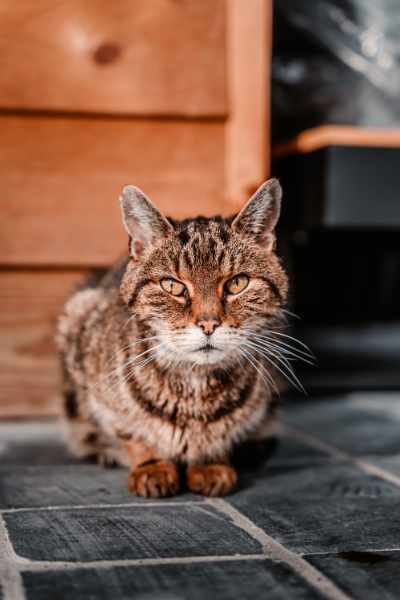
Wet cat food has at least 65% moisture but can contain up to 80% water content. Dry food by comparison is only 20%. This means that your cat will need to eat a higher volume of wet food to gain the same amount of calories as dry. It’s always a good idea to read the feeding guidelines on the packet to get an idea of how much your cat will need.
Wet food works well to keep your cat hydrated and can be good to encourage fussy eaters to eat. Dry food is good for your cat’s teeth as crunching on the kibbles helps to keep them clean. The most important difference between wet and dry food is the water content and cats that prefer dry food should always be encouraged to drink plenty of water.
Feeding Specialist Diets
Some cats require a specialist diet to keep them in good health. These diets should be recommended to you by a veterinarian so that you know you’ve chosen the best one for your cat. Here are some common conditions and how diet can help alleviate symptoms.
Protecting Urinary Health
Cats are prone to cystitis caused by stress, infection, and crystals. Feeding your cat a special diet can help reduce the risk of issues by moderating their intake of certain minerals so fewer crystals can form. Signs of cystitis include urinating outside the litterbox, yowling when trying to urinate, increased frequency of urination and blood in the urine. If your cat is showing any of these symptoms then take them to your vet as soon as possible.
The Diabetic Cat
Diabetes is a serious condition that can affect cats of any age. Overweight cats are at higher risk of the disease but there are other risk factors as well. Typically the first sign of diabetes is cats drinking more water and urinating much more than usual.
Luckily, diabetes is treatable by daily injections of insulin and your vet can walk you through the procedure step by step. Adding in a food that is formulated for diabetics can help control the disease and may reduce the amount of insulin you need to administer.
The Hyperthyroid Cat
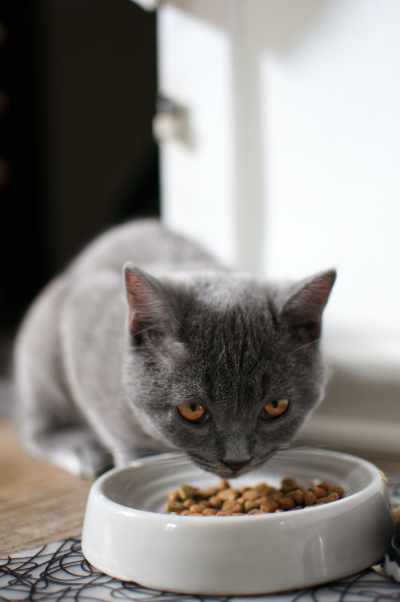
Older cats risk developing hyperthyroidism where the thyroid gland in their neck produces too much thyroid hormone. This can cause a lot of issues for your cat such as heart disease. Hyperthyroid cats are often very hungry but also lose weight and you may notice changes in behaviour at home. There are lots of ways to treat hyperthyroidism including surgery, medication and radioactive iodine therapy.
A specialised diet can also help control the disease by reducing the amount of iodine in your cat’s diet. This limits how much hormone the gland can produce so can help limit symptoms. Always take your cat to a veterinarian if you’re concerned they may have hyperthyroidism.
Kidney Disease
Kidney disease is a huge issue for older cats. Cats have very delicate kidneys and these can be easily damaged. If your cat is drinking more water than usual, urinating more, losing weight or just seems generally unwell then take them to your vet as they could have kidney disease. Kidney issues are not curable but can be managed with medications and a specialist diet that can slow the progression of the disease and make your cat more comfortable.
If your vet has diagnosed kidney disease then they will recommend a prescription diet that is low in phosphorus, has moderate levels of high-quality protein, and has added omega-3 fatty acids, potassium and antioxidants. All these components help to slow the disease and keep your cat in as good health as possible otherwise.
Final Thoughts
Your cat’s calorie requirements can vary throughout its lifespan and will change with factors such as activity levels and overall health. It’s always a good idea to speak to your veterinarian to establish how much your cat needs to eat and whether or not it should be on a special diet. A well-balanced diet is the best thing you can do to ensure your cat lives a long and healthy life so give you can rest assured you’ve done well by your furry friend.


